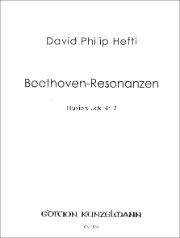Jazz, Rock&Pop young talent
On August 31, nine bands met for a "Come Together" at the Moods jazz club in Zurich as part of the second Swiss Youth Music Competition (SJMW) Jazz Rock&Pop.
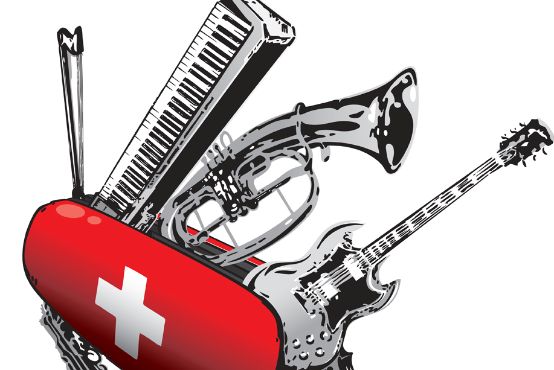
Nine bands took part in the second Swiss Youth Music Competition Jazz Rock&Pop, which presented itself in a new format this year, qualified for the final, the Come Togehter at Moods. The bands were judged by a jury of nine. The jazz jury consisted of Hans Peter Künzle, Florian Heeb, Thomas Dobler, Urs Röllin and Gregor Frei. The rock & pop bands were judged by Martin Lehner, Daniel Schwarz, Claudio Cappellari and Christophe Rosset. Urs Schnell from the Suisa Foundation moderated the event. One band was chosen as the best in each category. There were special prizes and parents, teachers and listeners had the opportunity to talk to the jury and the bands.
Awards and special prizes
The Bernese band M'Adam(e) was voted "Best of Band Jazz". In addition to this award, the band also received a special prize in the form of a performance at the Schaffhausen Jazz Festival 2014.
In the Rock&Pop category, the group Funk Alliance from the Bernese Jura won the title "Best of Band Rock&Pop". Thanks to a special prize, the band was also able to perform at the Stanser Musiktage 2014.
The Jakob Kulke Jazz Quintet received a voucher for a free jazz course as part of the Arosa Music Course Weeks 2014 and BOBaDROP was awarded the EMCY prize (European Union of Music Competition for Youth). This special prize earns the band a prizewinner profile on emcy.org and may lead to concerts or masterclasses for jazz in Europe.
Music village of Ernen awarded Prix Montagne
The music village of Ernen has been awarded the 2013 Prix Montagne, worth CHF 40,000, by Swiss Mountain Aid and the Swiss Association for Mountain Regions (SAB). 50 projects were submitted.
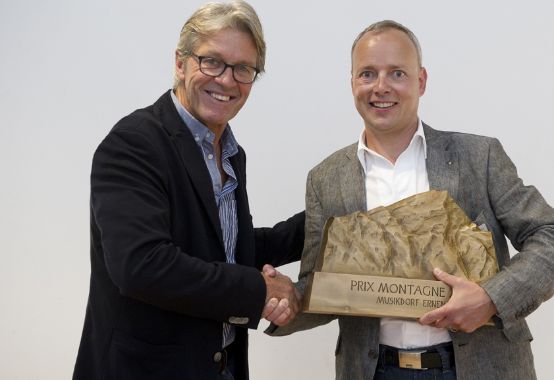
The SAB and Berghilfe are awarding the prize for the third time. The jury headed by President Bernhard Russi nominated nine favorites. According to Berghilfe and the SAB, all of the nominated projects have a model character and make an exemplary contribution to value creation, employment or economic diversity in the mountain region.
The Music Village Ernen was founded by the pianist and music teacher György Sebök, who died in 1999. For over 20 years, concerts have been held in Ernen with renowned, internationally known greats of classical music. These, as well as the international master classes and writing seminars with Donna Leon, have made the Valais village famous far beyond the country's borders.
Particles, waves, crystals
In addition to works by Chaya Czernowin and Ludwig van Beethoven, Michael Pelzel's second string quartet was premiered.
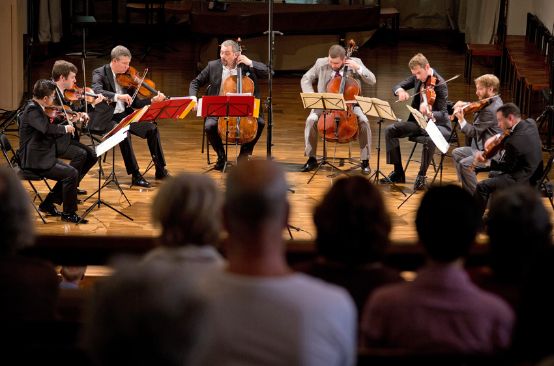
The fact that the stained glass windows at the side of the church, through which the light streamed in, showed different colored puzzle pieces seemed to fit in perfectly with the concert program, which was entitled Revolution Chamber Music 2 on the morning of August 24 in Lucerne's Lukas Church. The French Quatuor Diotima and the American JACK Quartet presented the Swiss premiere of the work Anea Crystal by the Israeli composer Chaya Czernowin, this year's Composer in Residence at the Lucerne Festival, the world premiere of the string quartet vague écume des mers by the Swiss composer Michael Pelzel, which was commissioned for the Lucerne Festival, and the String Quartet in C sharp minor op. 131 by Ludwig van Beethoven.
Two become a third
Chaya Czernowin has created two pieces of the puzzle that fit together perfectly to form a third with Anea Crystal created in 2008. Fascinated by the perfection of crystal structures, she composed two string quartets that complement each other in such a way that they form an octet when played simultaneously. The first part Seed I, skillfully presented by the Quatuor Diotima, begins with a viola motif reminiscent of oriental sounds. It then loses itself in glissandi and repeated notes that leave far fewer gaps than the concept of interlocking string quartets would lead one to expect.
The four musicians of the JACK Quartet devoted themselves with concentration and precision to the somewhat wilder, rougher and more divergent sounds of Seed II. One would have liked to have heard immediately afterwards how the experiment of the combined parts would turn out. However, the two ensembles only came together later to form the octet for Chaya Czernowin's Anea. The motifs and character of the individual pieces remained recognizable and stood out as such from the overall sound. Beyond this, however, an impression of broad flatness emerged, in which one would have wished for a little more transparency, more pauses and silence at times.
-
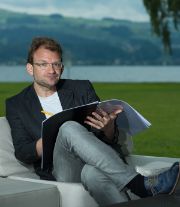
- Photo: Vinzenz Niedermann
- Michael Pelzel
Suggestions in and from the east
Pre-art brings musicians into contact across political borders and explores musical boundaries. Following a concert at the pre-art festival in Wallisellen, the pre-art soloists and the Convergence New Music Ensemble will be performing new works in Boswil and elsewhere this fall, including those created for the pre-art composition competition.
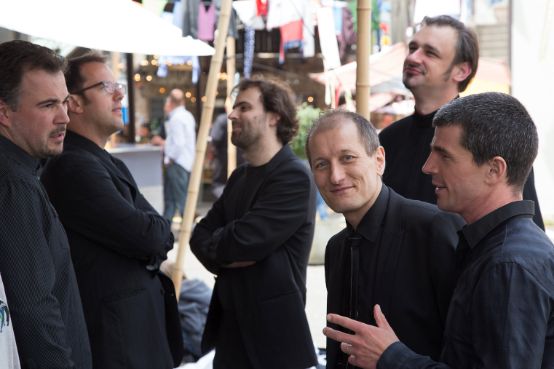
"This piece takes us to the limits of what can be played and heard," warns Boris Previsic in the Zwicky-Areal in Wallisell, before he directs his flute into an acrobatic breath and breathing maneuver: he begins the impressive piece DAH (Bosnian for "breath") by Bosnian composer Aliser Sijaric (*1969), which he composed on the basis of studies on the breathing of schizophrenics. Sometimes restlessly halting, sometimes prancingly narrative, it explores the boundaries between sound and breath, between sounding and hissing, documenting loss of breath and breathing again, loss of meaning and gain of meaning at the same time.
With his introductory words, Previsic names a principle that not only aptly describes the concert program of the dedicated suburban festival "Blick in den Osten!" (August 16 to 18, 2013), but at the same time stands for a central concern of pre-art It is the borders, or rather: overcoming them; those between countries and cultures and those that surround styles, genres and traditions. pre-art, founded in 2001 by Matthias Arter and Boris Previsic, has been dedicated from the very beginning to the exchange with and promotion of young musicians from marginalized regions of Europe, mainly from Southeast Europe and the Caucasus. In addition to organizing composition competitions, artist residencies, master classes, instrument and sheet music assistance and other support measures for talented musicians from these regions, they are responsible for an impressive variety of intercultural art projects on both sides of the border.
However, the focus is not only on cultural boundaries, but also on artistic ones: "pre-art explores aesthetic boundaries and thus enables new artistic paths", according to its charter. Tradition is confronted with the present, the center with the province, the "so-called marginal" expresses "the essence of our culture" in the difference to the established. However, exploring borders also means moving closer together and addressing commonalities. Inner borders thus become the subject matter: for example in the pre-art project "Safientriennale", a transdisciplinary art spectacle that connects the mountain regions of the Caucasus and the Balkans with the equally marginalized Swiss Safiental. Or in the Sonemus ensemble founded in Sarajevo in 2001 under the direction of Aliser Sijaric, which brings together musicians from the successor states of Yugoslavia, which are still working together reluctantly, thus overcoming borders on site.
Balancing and irreconcilable
In the Zwicky-Areal it becomes clear that this borderline work also develops a high aesthetic productivity. In the piece Jazz Exprompt by the young Belarusian composer Andrey Tsapko (*1987), a jazz vision unfolds that oscillates between pulling accordion sounds, deep bass vibrations and catchy melodic quotations, light-footedly balancing the new with the old and the Eastern with the Western. There is no reconciliation of opposites in the piece OFF by the Macedonian Darija Andovska (*1979). OFF stands for Oblivion, Fade and Farewell, designations for a change of "aggregate state" quoted from Shakespeare. Andovska traces these transitions, but leaves them standing abruptly. The musicians - Matthias Arter on the oboe, Vladimir Blagojevic on the accordion, Aleksander Gabrys on the double bass and Boris Previsic on the flutes - use their entire bodies to create a dramatic and at the same time pleasurable exploration of the apparent. "As if there was ..." they breathe between stomping and tapping, before continuing in the high squeals of the flutes until a Stravinsky-like outburst of chaos, which even the low bass voices can no longer keep their feet on the ground. In addition to other recent compositions from Armenia and Russia, the concert in Wallisellen is framed by the G major Trio Sonata by J. S. Bach. The eruptive, agitated music is countered by the smooth, flowing music. Only the accordion "smuggled in" as basso continuo lends the familiar a touch of border-crossing.
-

- Photo: Jano Demetrashvili
- Convergence New Music Ensemble
Youth choir Cantacanti at the Eurotreff 2013
The 16th Eurotreff will take place in the German city of Wolfenbüttel from September 4 to 8, 2013. The choir from Wattwil cantonal school will be there.
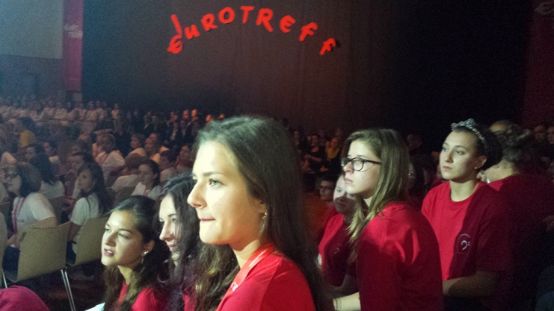
The aim of the festival is to give children and young people from all over Europe the opportunity to get to know each other through music and to sing together. In workshops with choir conductors from France, Spain and Germany, the choirs will learn new repertoire on the theme of "Sounds of Nature".
Cantacanti, the choir led by Max Aeberli from the Kantonsschule Wattwil, already took part in a Eurotreff in Wolfenbüttel in 2011. The enterprising choir frequently takes part in competitions in Switzerland. It won first prize at the 1999 Swiss Choir Competition in Zug, third prize at the same competition in Vevey in 2002 and also first prize at the 2005 Choir Open in Gossau/St. Gallen.
Website of the Eurotrreff: www.amj-musik.de/eurotreff2013
Beethoven foreshadowing
A sophisticated piano composition with a "double bottom".

David Philip Hefti wrote his Beethoven resonanceshis second piano piece, commissioned by the Musikkollegium Winterthur. The task was to write a solo piano work with reference to Beethoven's symphonies. Hefti took the theme from the slow movement of the 7th Symphony as the starting point for his piece.
"The compositional means in this piano piece were reduced to the extent that the extended playing techniques inside the grand piano ... were dispensed with. By using all three pedals and various pedal effects, a multi-layered palette of timbres is nevertheless achieved. In addition, a field of tension is created between free and precisely notated passages as well as between sharp attacks and delicately resonating echo tones, which again and again give a hint of Beethoven's music in diffuse sound form." This precise and very accurate description comes from the composer himself. In fact, the Beethoven quotations are only superficially perceptible in a few places. Much more dominant are the resonances, which give the piece a "double bottom" with the help of the frequently used sustaining pedal.
The result is a sophisticated composition that can also exist independently of Beethoven's subject matter, as a Piano Piece No. 2. And although only traditional playing techniques are used and the musical text reads clearly and plausibly, the work requires - as the writer was able to see for himself - a good deal of patience and discipline when rehearsing ...
David Philip Hefti: Beethoven Resonances, Piano Piece No. 2, GM 1880, Fr. 21.00, Edition Kunzelmann, Adliswil 2012
Better not to be moved to tears
Emotions such as crying, anger or rage, but also dust, wind, cold air, irritant gases and so on can cause the eyes to water. This can lead to problems, especially when making music.

Georg von Arx - Watery or even watery eyes often only occur in special situations. During demanding visual activities such as reading, working on a PC or making music, even slightly watery eyes can lead to a considerable reduction in performance. Common causes of watery eyes are conjunctivitis, dry eyes, eyelid malpositions, drainage obstructions in the draining tear ducts and much more. These causes will not be discussed in detail here.
Functional disorders that do not appear to have an obvious cause are more important for musicians, as they are difficult to control. In the interplay of local and central control factors during visually demanding activity, a central reduction in the blink rate, i.e. controlled by the brain and nervous system, causes increased evaporation of the tear film and thus a relatively dry eye.
The more we concentrate on our visual task, the less frequently we blink. The tear film becomes unstable, breaks up and causes a "dryness irritation" of the cornea, which in turn triggers increased, sometimes excessive tear secretion via a reflex arc. This can be exacerbated in particular by insufficient lighting (for example in the orchestra pit), as we then reflexively "tear open" our eyes even more and blink even less frequently. Optimum lighting of the music stand (without glare!) is therefore also important in this respect.
Blinking is a rapid, usually involuntary and unnoticed closing and opening of the eyelids (eyelid closure reflex), which primarily serves to maintain the tear film and thus the optimal optical quality of the visual system. We normally blink about 12 to 15 times per minute, i.e. every 4 to 6 seconds, over an average period of 300 to 400 milliseconds. The dark phase caused by eyelid closure is not consciously perceived, as visual perception is suppressed in the relevant areas of the brain shortly before blinking.
Monotonous visual work, especially, as already mentioned, with inadequate lighting of the work area and work with high visual demands lead to staring at the work area with a decrease in blink frequency of more than 50 percent. Frequent but brief interruptions to work for a few minutes can improve the moistening of the cornea sufficiently so that there is no increased reflex tear secretion and therefore no watery eye.
Crying can be an expression of strong emotions such as pain, sadness, helplessness, fear, feelings of deep hurt and injustice. These emotionally induced tears do not play a role in professional musicians in that they have learned to control their emotions in the course of their work. The "tear center" is connected to various regions of the brain, such as the limbic system ("emotional center"), but also to the frontal brain. The functions of the frontal brain concern the reception and processing (control) of sensory information for perception, thinking, language, motor operations, activity, movement and action control, voluntary movements and actions, consciousness, higher intellectual processes and emotional-affective aspects of behavior.
Nevertheless, a particularly "touching" piece of music can touch the corresponding emotional "button" and make us cry, which can then cloud our clear view of the sheet of music. It is not uncommon for poorly corrected defective vision to cause watery or even watery eyes. This is because the eye then has to work much harder to see well. Visual aids that are individually and optimally adapted to professional needs can provide a remedy.
Dr. med. Georg von Arx
Ophthalmologist FMH
Admedico Eye Center
Fährweg, 4600 Olten
> info@admedico.ch
The singer Esther Ackermann doesn't seem to think about the audience when she sings these songs - to the delight of the listeners.

Born in the south of France with Jewish-Spanish roots, the Geneva-based singer Esther Ackermann literally soaked up the Jewish songs her mother sang to put her to sleep as a child. This is how she tells it. Fascinated by the musicality of the language, she is said to have written her first poem at the age of seven. Now, almost 40 years later, she has recorded these songs with guitarist Paco Chambi under the title A la una yo naci recorded. It is a short album with twelve tracks - a total playing time of just 31 minutes - on which she sings about childhood and Jewish culture with great tenderness. And she does it with intensity and concentration and with such childlike delight, as if she were simply singing to herself under a shady tree while picking vegetables in front of the house. This creates a haunting intimacy that is all the more moving as it allows the listener to immerse themselves in a world that awakens longings without lapsing into folksy sweetness. Perhaps it is the cheerful melancholy of her songs that has made this a very personal album. It has what makes beautiful and good music: it is able to touch us.
The simple songs are accompanied by a classical guitar, unobtrusively and with great flair in a folk-jazz style. That's all this music needs. And so you quickly get the feeling that two artists are making music here who are never concerned with technical intrusiveness and sophistication, but only with expression. A glass of wine at a bistro table and the dream of escaping to the south somewhere. - Fortunately for A la una yo naci the Repeat button.
-

00:00
- A la una yo naci
-

00:00
- Los bilbilikos
-

00:00
- La Serena






